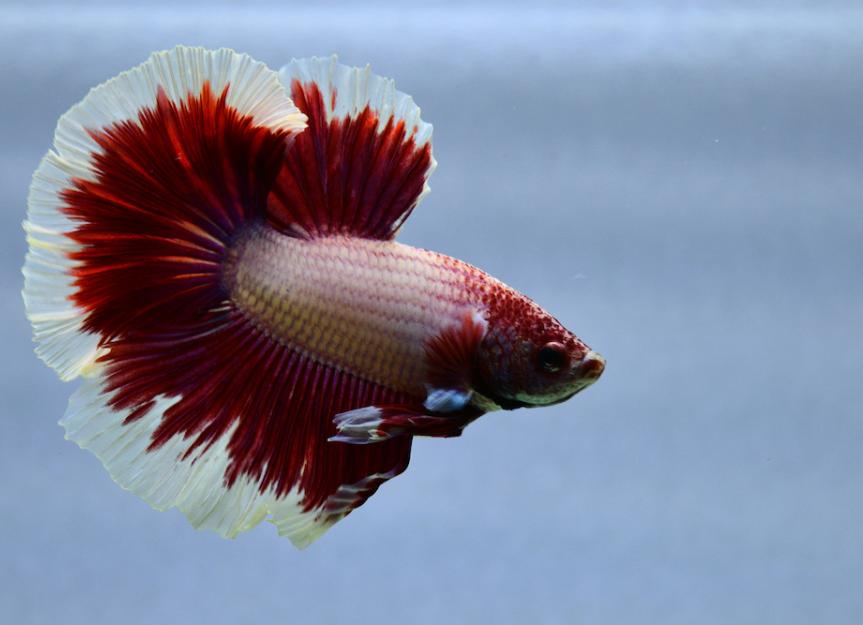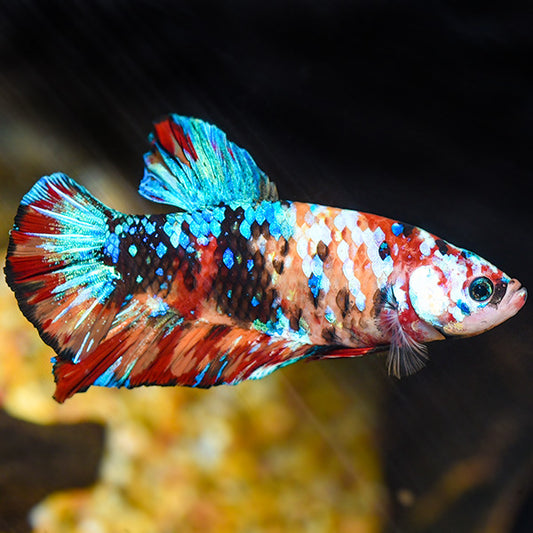Betta Fish Care: Essential Tips for a Healthy and Pleased Family Pet
Betta Fish Care: Essential Tips for a Healthy and Pleased Family Pet
Blog Article
Reproducing Betta Fish: a Comprehensive Step-By-Step Guide to Effectively Raising Baby Bettas From Eggs to Their Adult Years
Reproducing Betta fish is a meticulous venture that needs careful preparation and execution to ensure the successful advancement of fry from eggs to mature fish. Selecting genetically diverse breeding couple with preferable qualities is just the beginning; developing an ideal environment and comprehending the complexities of the reproducing procedure are just as critical. As the male Betta diligently constructs a bubble nest and guards the priceless eggs, the succeeding stages of treatment and change need attention to detail and understanding of best practices. Exactly how does one navigate the difficult yet gratifying course of nurturing these vivid creatures to adulthood?

Picking Reproduction Pairs
When beginning on the trip of breeding Betta fish, picking the appropriate reproduction pairs is critical to accomplishing preferable attributes and a healthy family tree - betta fish. The initial step in this process is to recognize the particular attributes you wish to improve or preserve, such as color, fin kind, and physique. It is necessary to select genetically diverse sets to stay clear of inbreeding, which can result in health problems and unwanted characteristics
Examine potential reproducing candidates thoroughly. A healthy male Betta needs to exhibit dynamic colors, an energetic behavior, and well-formed fins, while the lady should also present vivid pigmentation and a rounded belly, showing readiness for spawning. Observing the personality of both fish is crucial, as aggressive or overly shy people may not breed effectively.
Keeping records of the moms and dad fish's origins can assist you track hereditary traits and prospective issues. Eventually, investing time in the selection process will considerably enhance the likelihood of creating strong, lively offspring that fulfill your reproduction goals.

Preparing the Reproduction Storage Tank
Creating an optimum reproduction setting is an essential step after selecting appropriate pairs for Betta fish. The reproduction container must be particularly designed to provide comfort and promote the natural breeding actions of the fish. Start with a tank size of a minimum of 10 gallons to ensure sufficient area for both the man and women Bettas.
Keep a gentle filtration system to maintain the water tidy while preventing strong currents that can stress the fish. Furthermore, an air rock can be included in offer oxygenation without disrupting the water surface as well a lot.
Temperature level regulation is essential; aim for a steady variety of 78-82 ° F(25-28 ° C) using a trustworthy heating unit. The pH level ought to be kept between 6.5 and 7.5, and regular water adjustments are needed to guarantee high water high quality.
Incorporate floating plants or spawning sponges to produce concealing spots for the female, while likewise urging bubble my site nest building by the male - betta fish. Lastly, make sure the container is free from sharp decorations and any kind of prospective risks, as the welfare of the fish should always be focused on during this essential phase of breeding.
The Breeding Refine
Normally, the breeding process for Betta fish involves a series of unique and observable behaviors that suggest preparedness for reproduction. The male Betta starts by building a bubble nest at the water's surface, which functions as a site for the fed eggs. This nest is important, as it supplies a secure atmosphere for the eggs until they hatch.
When the nest is developed, the man will present courtship behaviors, such as flaring his fins and exhibiting vibrant colors to bring in the female. The woman, upon noticing the male's preparedness, will certainly respond by presenting upright stripes along her body, indicating her receptiveness.
The fertilized eggs then fall to the bubble nest, where the male very carefully accumulates and returns them to the nest. Following this, the male thinks responsibility for protecting the nest and making certain the security of the eggs till they hatch out, normally within 24-36 hours.
Taking Care Of Betta Fry
Caring for Betta fry requires cautious attention to their environment and nutrition to make certain healthy growth and growth. After hatching out, Betta fry are incredibly little and at risk, necessitating a stable and tidy environment. Preserving a water temperature in between 78 ° F and 80 ° F is vital, Visit Website as Betta fry thrive in warm conditions. Additionally, ensure that the water is without damaging toxins; regular water adjustments of 10-20% are recommended to maintain optimum water top quality.
Feeding Betta fry is just as essential. Feed them tiny amounts numerous times a day, being cautious not to overfeed, which can lead to water top quality issues.
Transitioning to Grownup Bettas
As Betta fry mature, transitioning them to adult Bettas is a critical stage that calls for cautious management of their environment and social interactions. This process generally begins when the fry reach around 6 weeks old, at which factor they can be gradually introduced to a much more organized living environment.
To facilitate this change, it is necessary to make sure that the water specifications-- such as temperature, pH, and ammonia levels-- are optimal and steady. Grown-up Betta fish prosper in cozy water (around 78-80 ° F) with a pH of 6.5 to 7.5. Slowly accustom the fry to these conditions to lessen anxiety.
Social interactions are another vital variable; male Bettas are infamously territorial and aggressive. It is a good idea to different males right into specific storage tanks as they grow. Female Bettas can be housed with each other, but care needs to be required to keep track of for signs of his response aggressiveness.
In addition, nutritional adjustments should be made as the fry expand. Incorporate high-grade pellets and live foods to sustain their development and wellness. By taking care of these aspects effectively, you can promote an effective change to adulthood for your Betta fish.

Conclusion
Successful reproduction of Betta fish calls for careful interest to detail throughout the entire process, from choosing genetically varied pairs to supplying ideal take care of fry. By guaranteeing ideal breeding problems and keeping water top quality, the likelihood of healthy and balanced spawn enhances substantially. Additionally, a well balanced diet and steady adjustment to grown-up atmospheres are essential for the development and growth of Betta fish. Complying with these steps vigilantly cultivates a flourishing populace of Betta fish, enhancing both their health and wellness and vitality.
Report this page